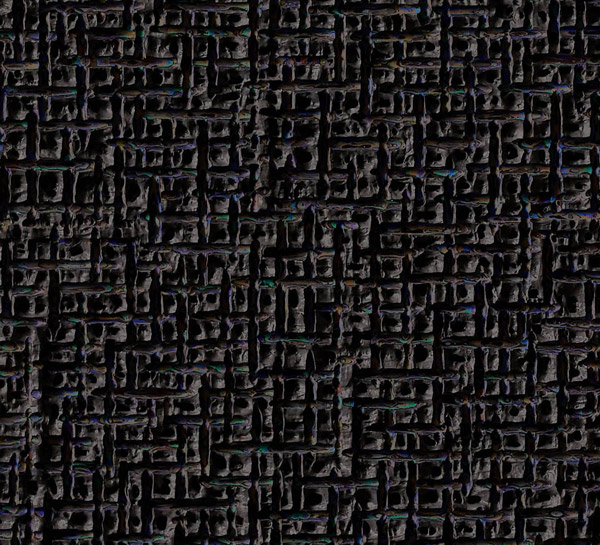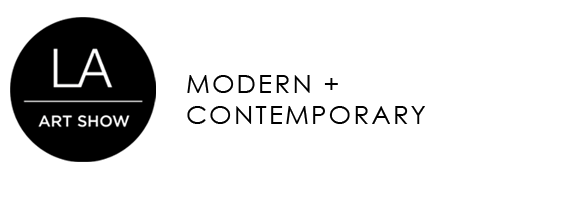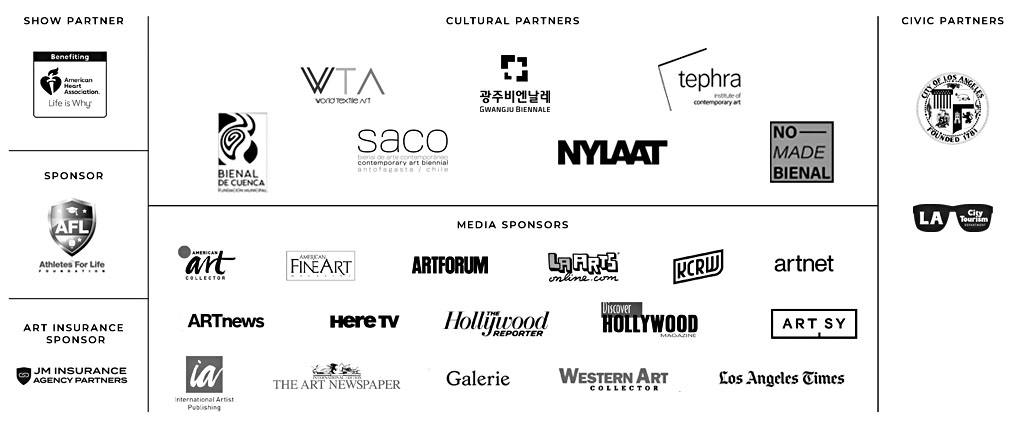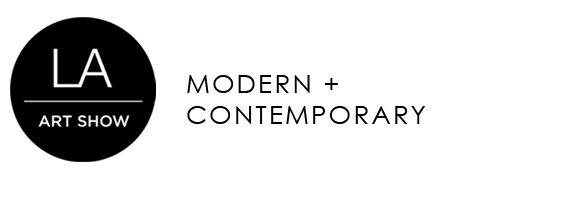Dansaekhwa IV: Internal Rhythm – Kim Tae-Ho
Curated by Simon Kwon
Presented by SM Fine Art Gallery
Curated by Simon Kwon
Presented by SM Fine Art Gallery
Development of Kim Tae-Ho’s most recent works coincided with the turning of the millennium, about the year 2000. Focusing on brush strokes and the application of color, for the most part, these works appear to be vastly different from his previous works.
Above all, concerning the changing of appearance, thick layers of paint form bulky masses, which clearly diverge from his previous two-dimensional illusionary pieces. Simultaneously there are differences in physicality, and they differ uniquely from the full compositions of his paper works. Regarding the process, he first draws interwoven lines. He creates a fixed rhythm, and after building up twenty layers of paint, he then scrapes away the dense accumulation of paint. Color that is hidden beneath rhythmically comes alive within the structure. Countless visual spaces are constructed within the overlapping grid formation; each cell is comparable to a beehive, producing its own life in the realm of painting.
The concept of Kim’s work is both constructing and de-constructing. The repeated grid formation acts as the framework of determined thickness, yet there are densely massed circular forms within the structure. He states: “the process of eliminating emphasizes the structure”; his method of scraping and carving away meticulously laid out paint is paradoxical because numerous layers of color are built up. Partial scraping brings buried colors back to life. The contrast between breathing colors within the solid outer structure creates a mysterious sense of life. The representative duality that originates from his early period has been transferred and transformed. After examining these works, we see that they reveal his method to be more meaningful because of his method of representation.
Kim has also made his process include the painting of the basic background color; this reveals his meticulous approach. The method of applying twenty different layers of paint in itself is painstaking labor.
Furthermore, work is added through the process of scraping and refining. Evidently, it is just as difficult to create the layers of paint as scraping them away. The process would be futile if subtle rhythm were not created through the process of scraping paint away or the addition of mysterious shimmer in the process of making color. Moreover, the expression would appear boring, were it not for the densely drawn small rooms harmonizing like a choir.
Finally, the artist’s interior psyche adds the finishing touch through a living rhythm. Without this, the works would be no more than simple masses. Japanese art critic Zibashikeo remarks that Kim “is a painter who attains something from beyond the two-dimensional surface of the material,” but what is that “something”? Perhaps he foresees a process that surpasses those that operate on what is visual. Since “aspects of texture and vision, time and space become integrated before dispersing again to form new meanings,” Kim deviates from the common grammar of paint making; his recent works are a fundamental challenge to painting itself as we consider whether limits can exist in painting.
Above all, concerning the changing of appearance, thick layers of paint form bulky masses, which clearly diverge from his previous two-dimensional illusionary pieces. Simultaneously there are differences in physicality, and they differ uniquely from the full compositions of his paper works. Regarding the process, he first draws interwoven lines. He creates a fixed rhythm, and after building up twenty layers of paint, he then scrapes away the dense accumulation of paint. Color that is hidden beneath rhythmically comes alive within the structure. Countless visual spaces are constructed within the overlapping grid formation; each cell is comparable to a beehive, producing its own life in the realm of painting.
The concept of Kim’s work is both constructing and de-constructing. The repeated grid formation acts as the framework of determined thickness, yet there are densely massed circular forms within the structure. He states: “the process of eliminating emphasizes the structure”; his method of scraping and carving away meticulously laid out paint is paradoxical because numerous layers of color are built up. Partial scraping brings buried colors back to life. The contrast between breathing colors within the solid outer structure creates a mysterious sense of life. The representative duality that originates from his early period has been transferred and transformed. After examining these works, we see that they reveal his method to be more meaningful because of his method of representation.
Kim has also made his process include the painting of the basic background color; this reveals his meticulous approach. The method of applying twenty different layers of paint in itself is painstaking labor.
Furthermore, work is added through the process of scraping and refining. Evidently, it is just as difficult to create the layers of paint as scraping them away. The process would be futile if subtle rhythm were not created through the process of scraping paint away or the addition of mysterious shimmer in the process of making color. Moreover, the expression would appear boring, were it not for the densely drawn small rooms harmonizing like a choir.
Finally, the artist’s interior psyche adds the finishing touch through a living rhythm. Without this, the works would be no more than simple masses. Japanese art critic Zibashikeo remarks that Kim “is a painter who attains something from beyond the two-dimensional surface of the material,” but what is that “something”? Perhaps he foresees a process that surpasses those that operate on what is visual. Since “aspects of texture and vision, time and space become integrated before dispersing again to form new meanings,” Kim deviates from the common grammar of paint making; his recent works are a fundamental challenge to painting itself as we consider whether limits can exist in painting.
Back




